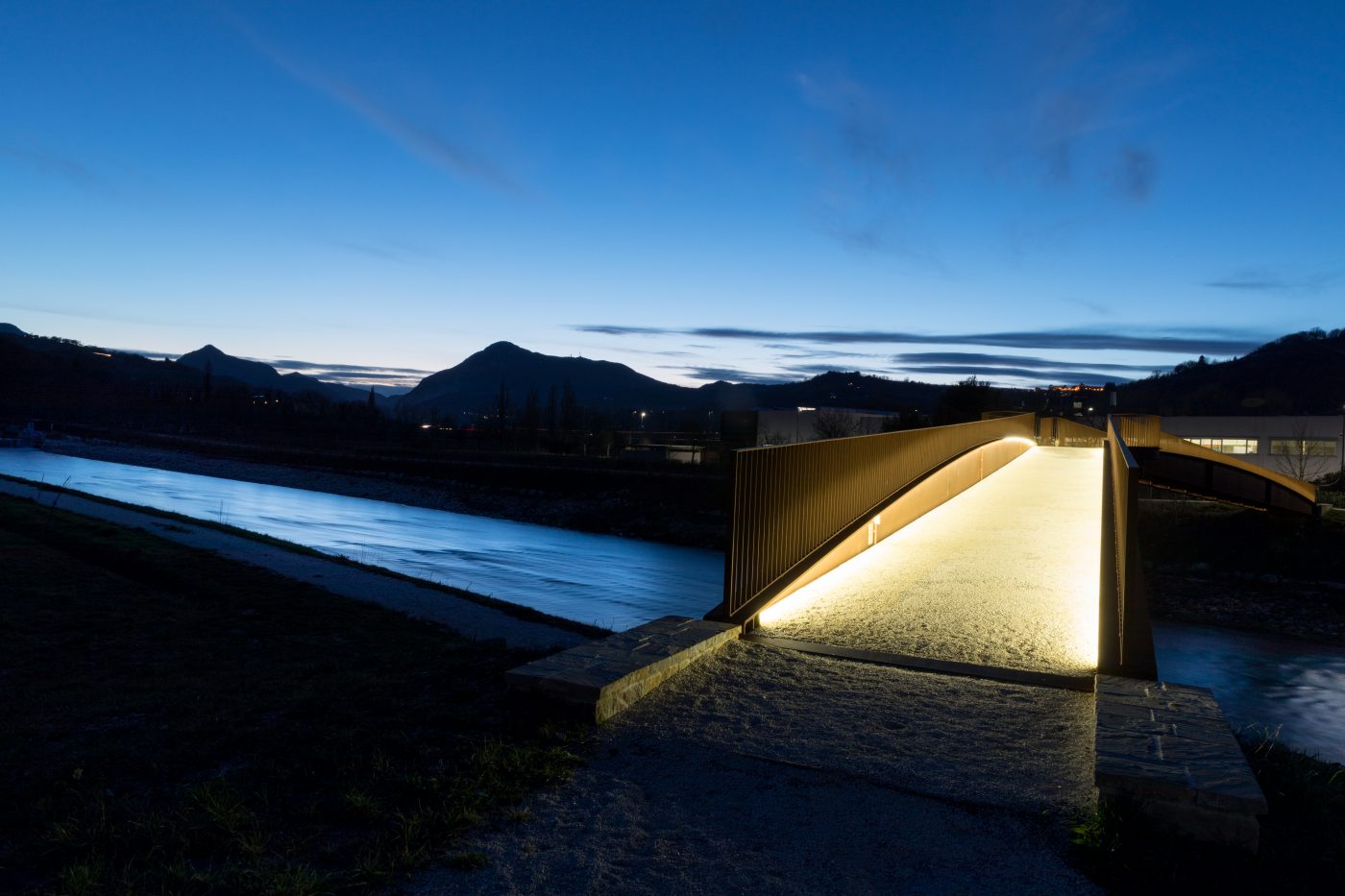Today the whole world is talking about the need for ecological transition.
Europe is indicating a roadmap to drive this important evolution.
Loccioni started to work on these drivers many years ago and can be a witness and open lab, having reached
and measured many
of these goals.
In the rural Marche hinterland, among the Vallesina vineyards, there are workshops along the Esino river where over 450 young people from Loccioni develop measurement innovations for the biggest names in world industry, with the aim of improving the well-being of the people of the planet; and it is here that over 30 years ago the open-air laboratory of what is now called ecological transition was born.
Loccioni’s intuition to rethink technological solutions to ensure comfort and optimize energy consumption in its laboratories dates back in the 1980s. It was then in fact that Enrico e Graziella, well in advance of a future trend of attention to well-being in work spaces, decided to air-condition all work environments, both offices and laboratories.
Already in the mid-90s the Loccioni laboratories were at the forefront in the building automation with automatic lighting and air conditioning of the working spaces and the measurement of consumption: the savings always invested in new technologies to plan the future with the experience of the past.
With the new millennium a conscious roadmap towards the objectives of Europe 2020 begins: the reduction of energy consumption, the reduction of CO2 emissions, the production from renewable sources.
But it was in 2008 that, thanks to the fundamental contribution of Federico Maria Butera, Professor of Environmental Technical Physics at the Milan Polytechnic, all of this beame a systemic approach and the Leaf Community was born.
A house, a building under construction, became the first laboratory for experimenting new technologies and ways of building, with the aim of creating a building whose ecological footprint was equal to its geometric footprint: a leaf, in fact. In the 6 apartments, intended for employees, every design and architectural choice has been made for maximum efficiency and energy production sized according to the zero emissions target (19.6 kW of photovoltaics and solar thermal panels for domestic hot water). Obviously, every factor of production and consumption is constantly monitored.
Two years after the total electrification of the Loccioni campus, despite the increase in energy consumed for the testing of new electric components, the increase in laboratories and collaborators, considering all sources of renewable energy production, the energy balance is always positive: Loccioni produces more clean energy than it consumes.
In 2023, the Leaf Community produced over 4.675 MWh of renewable energy, of which over 81% self-consumed thanks to electrical and thermal storage systems.
Almost 60% of the time the withdrawal from the grid is zero, with the whole campus potentially in an energy island.
Not even considering the rural project, Loccioni contributes to avoiding the emission of over 923 tons of CO2 into the atmosphere, which not only offset its Carbon Footprint, but go further to make the company a negative emitter for 0,78 tons of CO2 per year.







